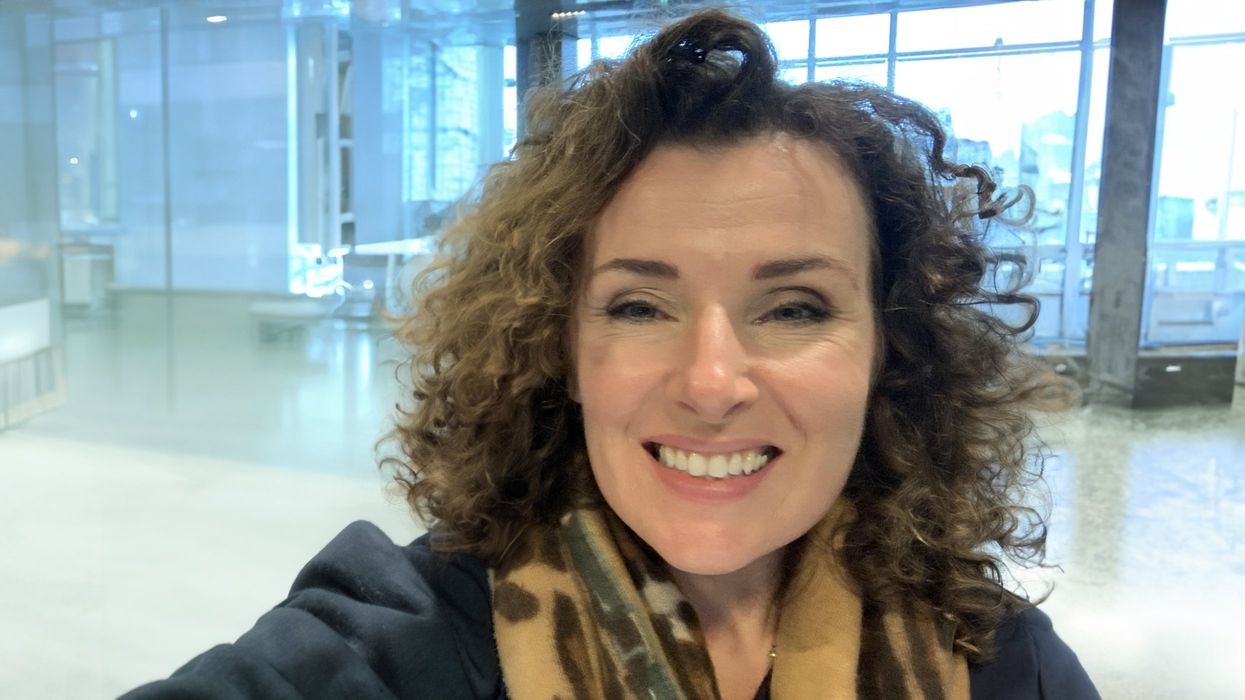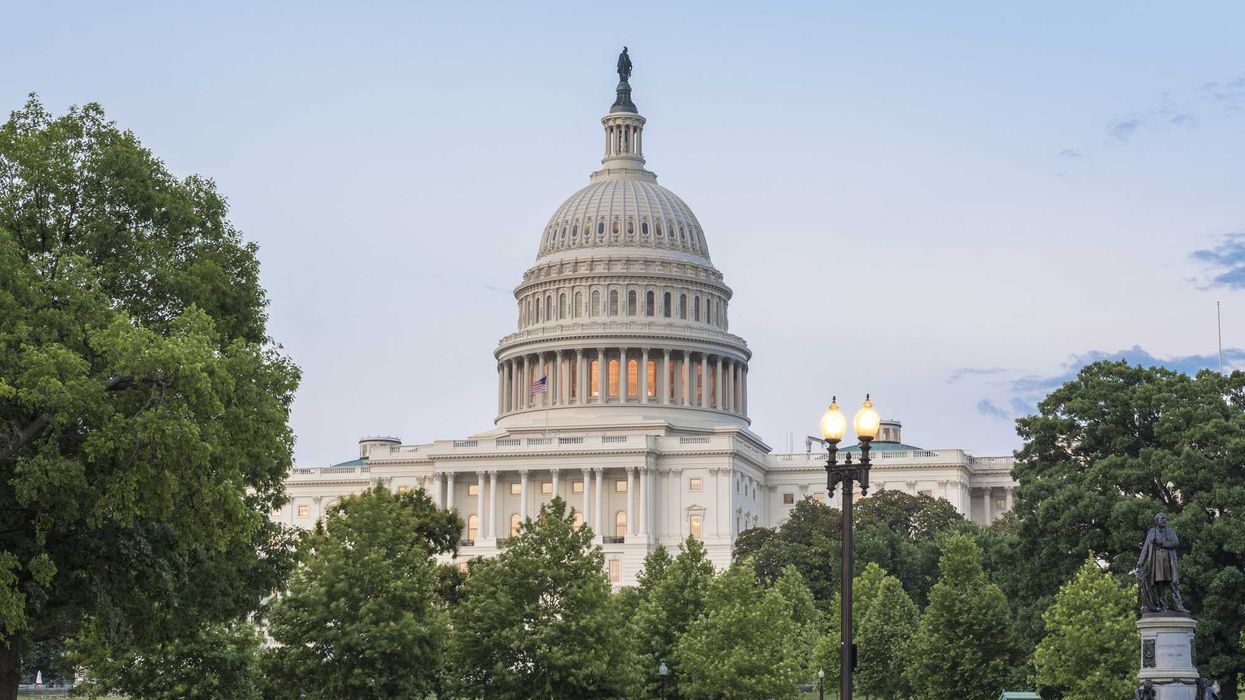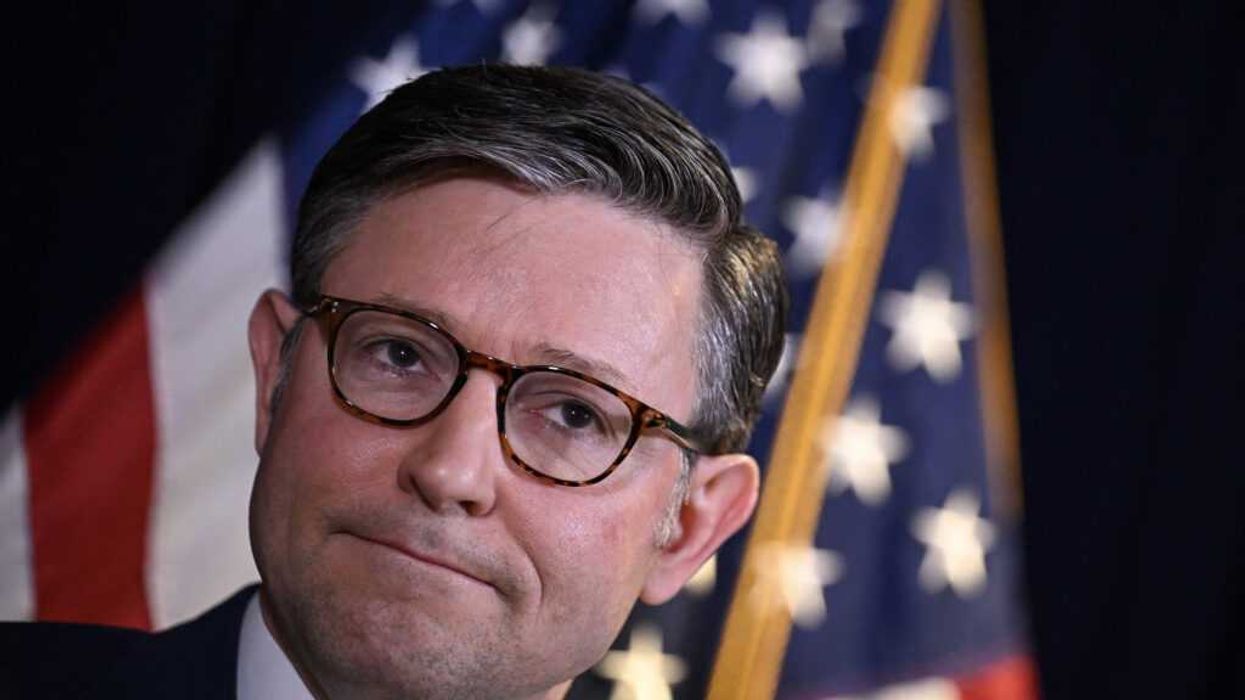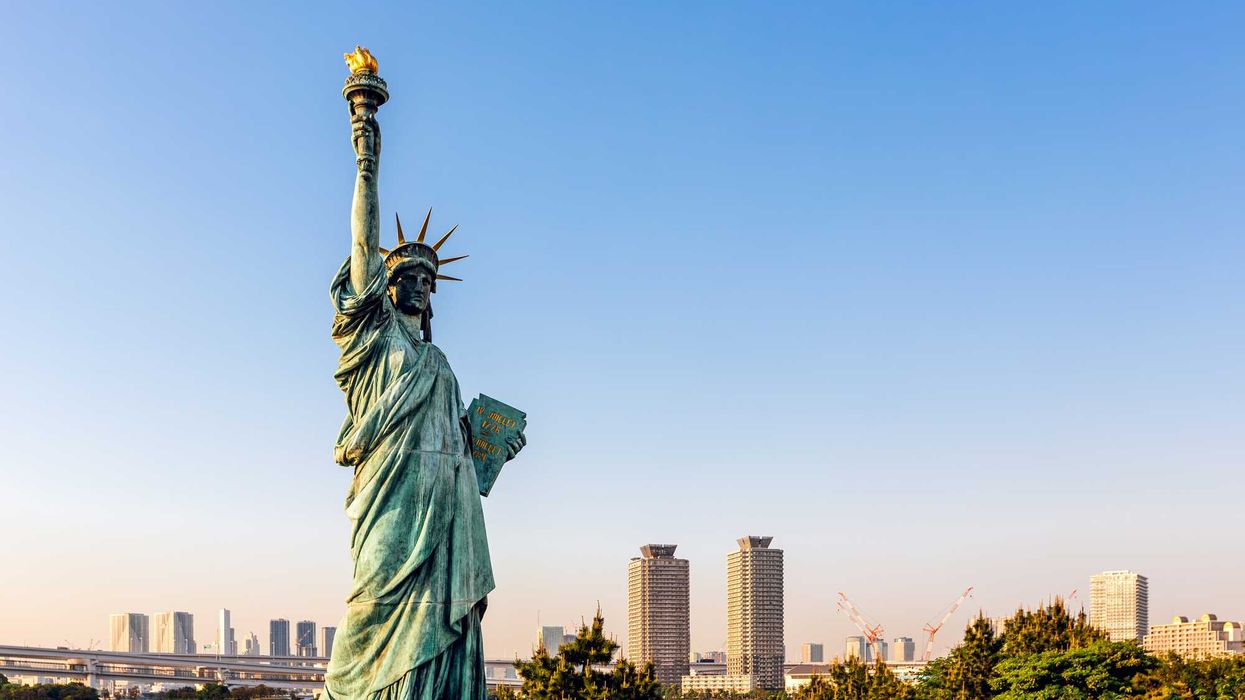Berman is a distinguished fellow of practice at The Harry Frank Guggenheim Foundation, co-editor of Vital City, and co-author of "Gradual: The Case for Incremental Change in a Radical Age." This is part of a series of interviews titled "The Polarization Project."
Clionadh Raleigh, a professor of political violence and geography at the University of Sussex, has been studying violence for more than 20 years and has come to a depressing conclusion: Global rates of conflict are rising dramatically. Raleigh tracks global conflict with the help of researchers at Armed Conflict Location & Event Data, an organization she helped to create when she was a PhD student.
According to Raleigh, the rise in violence reflects the chaotic politics we are living through at the moment. “The most potent and growing forces in the world are political competition and authoritarianism, not inclusion, democracy, or a desire for peace,” she argues.
I recently spoke to Raleigh about violence across the globe, from Ukraine to Myanmar, and about the effects of political polarization in the United States.
This transcript has been edited for length and clarity.
Greg Berman: There’s an old quote often attributed to Joseph Stalin that suggests the death of one person is a tragedy, but the death of millions is just a statistic. It seems to me that ACLED is essentially dedicated to disproving that adage. Let’s start with the basics: Why is it important to track statistics about conflict?
Clionadh Raleigh: I always emphasize, especially now, that the small conflicts and the ones that are constantly ongoing — think Somalia or Chad or Pakistan — are just as meaningful and can tell us just as much about the nature of violence as the Ukraines and the Gazas can. Large wars fought between states generate a tremendous amount of violent events and fatalities. But they don't vary very much in their iterations. The lines of the conflict are well-defined. But it's these other conflicts where the violence is constantly shifting. The groups involved change. The ideologies change. The conflict in these countries is far more interesting than some of the larger wars, but it doesn’t generate the same amount of heat, the same amount of global audience.
At ACLED, we believe every conflict is important, from the peaceful protest to the act of mass killing. The intensity and the characteristics of these events can differ, but they each tell us something about the political environment in which people are living. And so we collect every one of these events. Every Monday, we release information about thousands of events across the world from the previous week. We try to track every sort of characteristic of these events. That enables us to offer pattern analysis. So we can say things like, “Violence has increased 27 percent in the last two years.”
GB: It seems to me that fatality numbers are often intensely disputed by groups with a political stake in the conflict at hand. I imagine that there are also enormous difficulties with compiling information about far-flung places. Talk to me about the challenges of compiling this data.
CR: I'm on record saying that fatality statistics are largely made up, in almost every scenario. People tend to think that there aren’t accurate fatality numbers because of under-reporting, or even, as you say, the difficulty of collecting events in hard-to-reach places. But that's actually not where we see the greatest differences in numbers. The greatest disparities come out of places like Ukraine and Gaza. There is no lack of information about these conflicts, but there is plenty of disagreement about different types of counting.
In Ukraine, recently, the U.S. was giving us some numbers. The Russians were putting out different numbers. And the Ukrainians were putting out still different numbers. Each country refuses to agree with each other because the numbers are central to their thesis about the war. We often find situations like that.
To be honest, the where, when and how of an event is often very straightforward to collect as long as you have been rigorous about the sources that you're willing to use and how you collect them. So, for example, Ethiopia has at least three major languages that you need to be collecting information in. None of them are English. If you don’t have stringers in different places, you're going to miss the events of that country, especially if you're relying on them to be reported in English. Local knowledge is extremely important to ensure that you are capturing not just the top-line conflict events, but also the ones that represent the reality to most people.
At ACLED, we don't use automated coding, and we don't use AI. We have researchers knowledgeable in several languages that live in these countries. We take in all this information from local partners and local media. And then we go through and we clean it and compare it to previous data from that place and other places to make sure that it's really robust, and then that's what we release into the world.
GB: Clearly, there's a deep appetite for information about what's going on in places like Gaza and Ukraine. I would imagine that, if I were in your shoes, I would struggle with the need to feed the beast, continuing to satisfy the outsized interest in those locations, as opposed to focusing attention on other places, like Myanmar, that are suffering from intense conflict but aren’t on the radar screen of most people.
CR: The beast is bigger than me, and it needs to be fed. We devote a lot of resources to these high-profile conflicts simply because the number of events coming out of them is so large. When Ukraine started — and, in fact, in Gaza as well — we were getting about 900 events a week. It takes a lot of researchers to be able to collect that much information and make sure it has notes, it's translated, etc. So we do end up hiring more people and keeping them on for years because of these conflicts.
But you’re certainly right about the importance of focusing on places like Myanmar. I have called Myanmar the most violent place on earth because it has the most armed organized groups, it has a very high rate of civilian fatalities, and it's a very diffuse conflict. What’s happening there is very dangerous for the majority of people within that country.
I often challenge people to move away from fatalities as the primary way to understand conflict and instead to look at events. We need to look at the exposure rate. Because in Ukraine, for example, we have a huge number of events, but it's only a very small proportion of the Ukrainian population that is exposed to the violence regularly. Whereas in Myanmar, we have a very large number of events and most of the Burmese population is exposed. That juxtaposition is really important.
GB: ACLED has documented that something like 15 percent of the world's population is exposed to conflict. I was wondering if you could help me place that in some sort of historical context. Steven Pinker has famously argued that if you look at many categories of violence, we've seen dramatic reductions over the past couple of centuries. But of course, his work has also gotten a lot of pushback, with many people arguing that we haven't really made significant progress. I'm wondering what you think of that debate.
CR: The Pinker argument kind of loosely hangs on this notion that he's been able to quantify the amount of violence a person would have been exposed to in the past. [Thomas] Hobbes once said that “ life is nasty, brutish, and short.” And it is certainly true that people used to be exposed to a huge amount of violence over the course of their lifetimes. Now, whether or not that reality can be compared to the political violence of today seems to me difficult to quantify.
What I would say is that there is a pervasive sense at the moment that we are living in an incredibly violent time — and that we could be entering one of the most violent eras since World War II. It's hard to disagree with that just based on the numbers. There may be fewer wars between countries than there used to be. After World War II, we saw a distinct rise in civil wars. Some of those were wars of independence, of course, in the 1950s and ’60s. And then there were what could be, I think, incorrectly, called “proxy wars” during the Cold War era. But really they were competition for political authority as newly established countries emerged. As civil wars have decreased, rather than countries becoming peaceful, what we've seen is a rise of political militias. There have been many more gangs with political and often economic objectives that have controlled territory and controlled economies.
In the West, the public's working theory of conflict is that it is something that happens in fragile states, in failed states and in poor places. But what we've seen is that the most drastic rises are happening in middle-income states and in countries that have adopted some democratic features. This is worrying because it suggests that there's no insurance against political violence and that it can happen even in places that have the kind of institutions that are supposed to protect people from violent political competition.
So when I think about “ The Better Angels of Our Nature,” I'm left with a sense that Pinker was not particularly aware of the ways in which violence was evolving in different countries and how that would maybe dampen his optimism. Lots of people were attracted to Pinker's thesis that basically we've sorted everything out. That argument hit at a particular moment of optimism about new technology. But I think it was just kind of a moment, rather than a fundamental change in society and politics. So I'm not on Pinker's team, I guess.
GB: Most of us want to live in a world without violence. But there’s no indication that we’re going to get there in our lifetimes. So I guess my question to you is: What can we reasonably aspire to in terms of global conflict? ACLED has said that 15 percent of the world is currently exposed to conflict. What should we be shooting for that number to be? Seven percent? Five percent?
CR: I don’t know the answer. But I do want to say that that 15 percent number could just as easily go up as down. WorldPop, our partner in putting together the conflict exposure metric, is about to release much more precise information about the demographics of many of the countries affected by violence. When we re-run those statistics with this updated demographic information, we might find that the figure increases.
I think the important thing to remember about the 15 percent figure is that some people might be exposed to conflict once or twice, but some people are exposed much more frequently. In Ukraine, I think it's only about 4 percent of the Ukrainian population that is regularly exposed. But they're exposed hundreds of times a year. I worry about the populations that are living in a constant state of terror.
GB: What can we learn from places where conflict isn’t happening on a daily basis?
CR: The places that I've seen that do not have any conflict consistently are places in which there is incredible adherence to law and order, whether by force, so there’s a high level of police or security services, or there’s a very high level of political and cultural homogeneity. In those places, everybody has kind of bought into the idea of how they're going to run the country rather than being at each other's throats. So Malawi, for example, is a pretty peaceful place. And so is Norway. They look very different, but they're peaceful for some of the same reasons, which is that the cost of violence in that society far outweighs the benefits that anybody would receive for engaging in it.
GB: Help me wrap my mind around the relationship between polarization and violence. Clearly there are places where there is very intense partisanship, but the threat of political violence is not elevated. How much should we be worried when we see increases in affective polarization?
CR: What I would say is that polarization may make the environment a little more fertile to violence, but alone it is insufficient. Polarization is pretty common. It's found in most political environments, but it operates on a different track from the violent competition in those environments.
Let me give you an example. In the United States right now, you have a very high rate of polarization. But the lines of polarization do not map onto the abilities of groups to organize and arm themselves for conflict. It takes a lot to organize an armed group. It takes a lot to engage in a strategy of violence in order to win some sort of political contest.
GB: I took some heart from your report that extremist mobilization in the U.S. is at the lowest level since you began tracking in 2020.
CR: In the U.S., I think political polarization has become almost like a form of entertainment. I don't mean to dismiss it. But what I mean is that it's an identity for people now. It's an identity that can become super salient during electoral contests and then die away after those electoral contests are over. By contrast, you need a much more robust strategy for violent conflict.
GB: To put my cards on the table, I think the talk about an American civil war is massively overinflated. At the same time, I am deeply worried about polarization. Even if it doesn't lead to widespread rioting in the streets or assassinations, I think we're seeing polarization erode faith in democratic institutions and make governance even more difficult than it usually is. Does ACLED track those kinds of outcomes?
CR: I think that you're 100 percent correct that polarization has real effects. They just don't happen to be violent. Its effects on the social fabric of a country can be dire, as you lay out. We don’t track social trust among individuals. But my sense is that now might be the wrong time to measure it. Right before an election, people's sense of how much polarization is coloring their lives is probably pretty pronounced.
People in the U.S. have a deep distrust of both local and national government, and that is true regardless of who's in government. A lot of the campaign rhetoric plays into this, whether it's talk about the illegitimacy of Joe Biden's win in 2020 or the discussion on the Democratic side that a win by Donald Trump would be dangerous to democracy. I’m not saying these are equivalent claims, but it all sounds the same to the audience it's aimed at. The result is to delegitimize [government].
I've been reading this book called “ When the Clock Broke ” by John Ganz. He's writing about the 1990s, when Newt Gingrich was becoming a player in the Republican Party. The rhetoric back then was pretty intense too. It was not that different from the hateful rhetoric of today. I think it is natural to feel a lot of anxiety about our current moment, but I’m not sure how much of a deviation it is from how the country's politics tends to play out.
GB: Well, one big difference between the 1990s and today is the rise of social media.
CR: The media environment in general, regardless of whether it's social media or more traditional media, is pretty important to what’s going on. There are silos of information on the left and on the right where it's not encouraged for you to be moderate. The media environment on the right is particularly toxic.
I went to Wisconsin after Trump won [the first time]. I had lived there for high school and for undergraduate. The people there are lovely, genuinely lovely. But when I went back, I found that people were wicked. They felt that they were able to say things that they would have never vocalized before. There was this sense that they had been allowed to be their worst selves because of what Trump was saying and doing in Washington. But I think that a lot of people are getting radicalized in their opinions without becoming radicalized in their actions.
GB: I'm curious to hear what kinds of reactions you've gotten to your reporting on the American protests about the Israeli-Palestinian conflict. I could imagine that your headline takeaway — that the vast majority of the protests have been peaceful — would upset some readers.
CR: They are mostly peaceful in the same way that the protests that emerged from the killing of George Floyd were mostly peaceful. When we initially reported that finding, it really annoyed the administration, but there was clear evidence that, in fact, they were mostly peaceful. But the news media focused on the rare phenomenon of violence, even when that violence was often directed towards those protestors. The protests about Gaza are very similar in the sense that there were thousands of events, and they were, in general, largely peaceful. Screaming in someone's face isn't an act of violence.
GB: In general, how do you think about incidents that may be small in numbers but that are quite symbolically powerful. I’m thinking of things like the killing of George Floyd or the attempts on Donald Trump’s life.
CR: This comes back to where we started, with your Stalin quote. Events differ in their significance. There are certainly cases where an event is so significant that you can talk about a dividing line, before and after. Oct. 7 is clearly one of those kinds of events. This is certainly one of the most significant events that's happened in the world in the last five years or so.
By contrast, I would say that the attempted assassinations of Donald Trump have not resonated in the same kind of way. It was not significant in part because it wasn't successful. And of course, the person who perpetrated it, he wasn't on the far left, he wasn't even on the left at all. So there was nothing to kind of grab onto that would stick to a pre-existing narrative. When that happens, events tend to fade into the political tapestry of a country.
This article originally appeared on HFG.org and has been republished with permission.




















